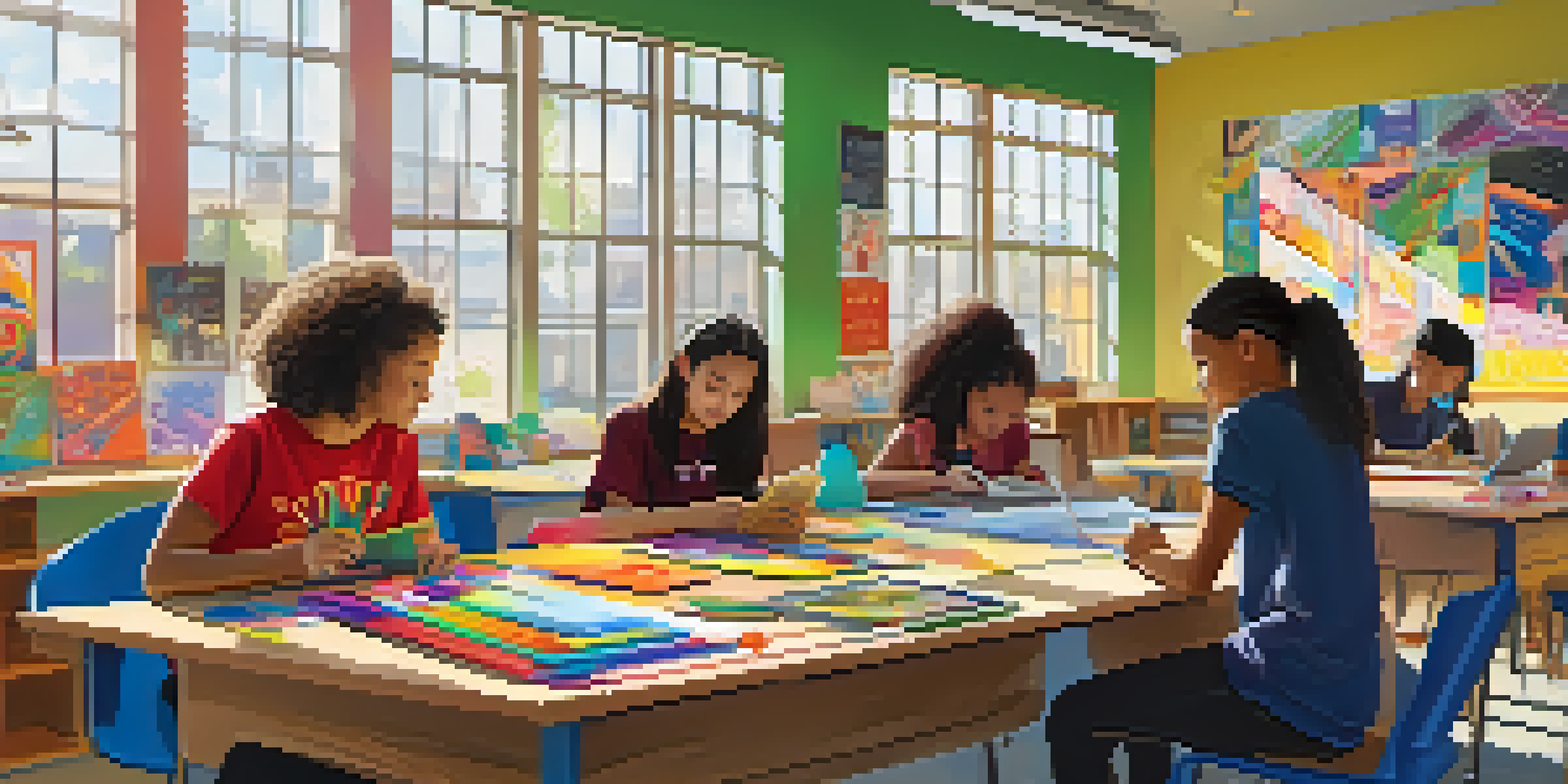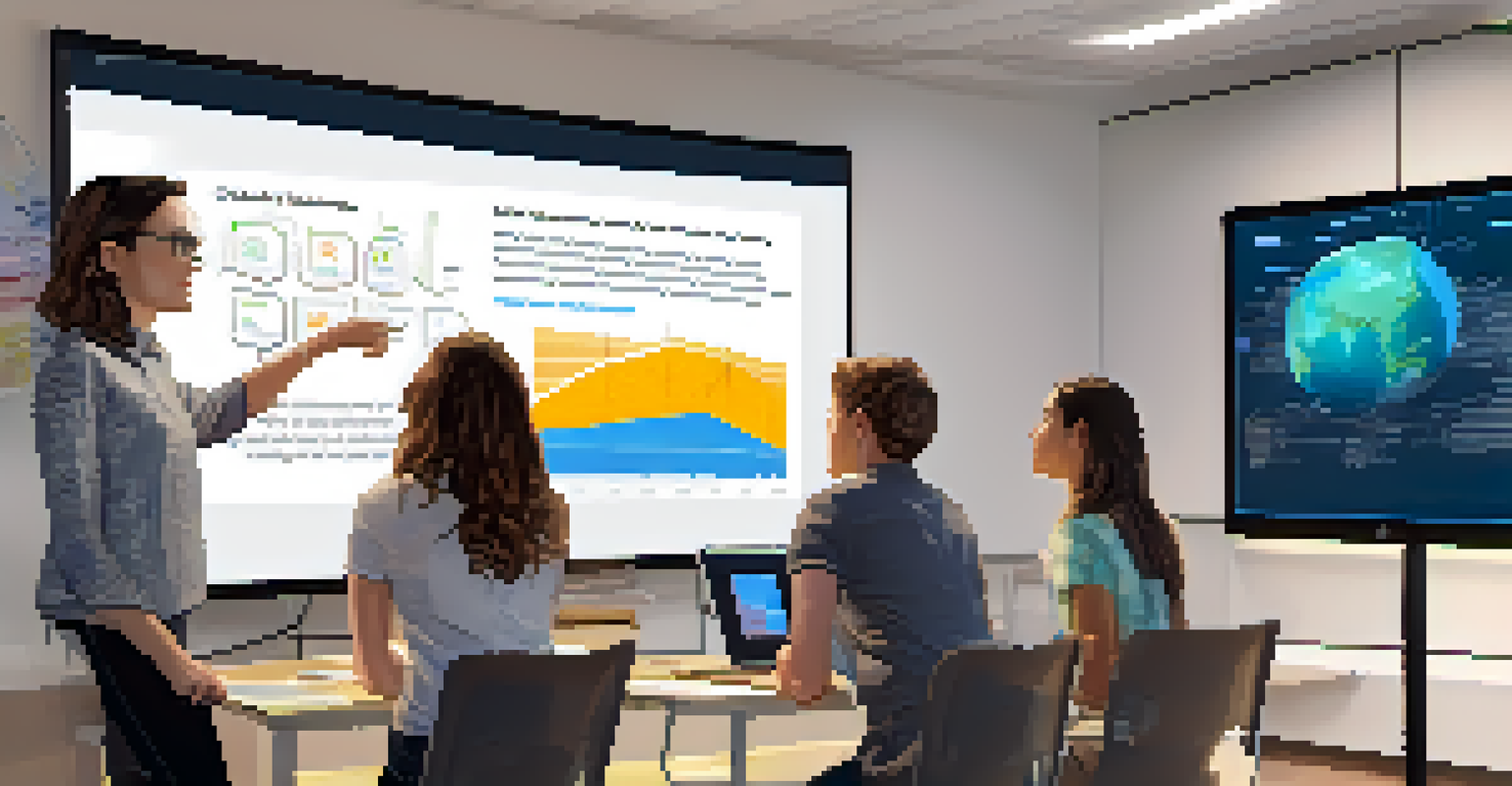Interdisciplinary Learning and Its Impact on Student Outcomes

What is Interdisciplinary Learning and Why It Matters
Interdisciplinary learning is an educational approach that integrates multiple subjects into a cohesive learning experience. Instead of compartmentalizing knowledge, this method encourages students to see connections between different fields, such as math and science or history and literature. Think of it like a puzzle; each piece represents a different subject, and together they create a complete picture of understanding.
Education is not the filling of a pail, but the lighting of a fire.
This approach is becoming increasingly important in a world where problems are complex and multifaceted. For instance, addressing climate change requires knowledge from environmental science, economics, and social studies. By fostering a more holistic view of education, interdisciplinary learning prepares students to tackle real-world challenges creatively and effectively.
Moreover, interdisciplinary learning can cater to various learning styles and interests. Students who may struggle in a traditional classroom setting might thrive when given the opportunity to connect subjects in a way that resonates with them personally. This adaptability helps to engage all learners and promote a more inclusive educational environment.
The Benefits of Interdisciplinary Learning for Students
One of the standout benefits of interdisciplinary learning is the development of critical thinking skills. By analyzing a topic from various angles, students learn to evaluate information more deeply and make connections that might not be immediately obvious. For example, while studying a historical event, students can explore its scientific, social, and economic implications, leading to richer discussions and insights.

Additionally, this approach fosters greater collaboration among students. When working on projects that require input from different disciplines, students must communicate and cooperate, mirroring real-world teamwork. These experiences not only enhance social skills but also prepare students for future workplaces, where collaboration is often key to success.
Interdisciplinary Learning Explained
This educational approach integrates multiple subjects, helping students see connections and tackle complex real-world problems.
Finally, interdisciplinary learning encourages creativity. When students are allowed to explore subjects in a blended manner, they often come up with innovative solutions and ideas. This creativity can be a game-changer, as it empowers students to think outside the box and approach problems with a fresh perspective, which is invaluable in today’s rapidly changing world.
Challenges of Implementing Interdisciplinary Learning
Despite its many advantages, implementing interdisciplinary learning can come with its own set of challenges. One common issue is the lack of curriculum alignment between different subjects. Teachers from different disciplines may find it difficult to coordinate their lessons, which can lead to inconsistencies in student learning. This requires open communication and collaboration, which can be time-consuming to establish.
The greatest danger in times of turbulence is not the turbulence; it is to act with yesterday's logic.
Another challenge is the need for teacher training. Educators must be equipped with the skills and understanding necessary to integrate multiple subjects effectively. Professional development programs that focus on interdisciplinary teaching strategies can be essential, but they require investment and commitment from educational institutions.
Lastly, assessment can become complicated in an interdisciplinary framework. Traditional testing methods may not accurately reflect a student’s understanding of a topic when it spans several disciplines. Educators may need to explore alternative assessment techniques, such as project-based evaluations or portfolios, to provide a more accurate picture of student learning.
Real-World Examples of Interdisciplinary Learning
Many schools around the globe are successfully implementing interdisciplinary learning. For instance, the High Tech High network in California uses project-based learning that requires students to tackle real-world problems through various subject lenses. Students might work on a project to design a sustainable garden, integrating science, math, and art to create a functional and aesthetic space.
Another example can be found in international baccalaureate (IB) programs, which emphasize connections between subjects through their curriculum. Students engage in projects that require critical thinking and collaboration, allowing them to apply knowledge in practical scenarios. This method not only enhances their academic skills but also prepares them for global citizenship.
Benefits for Student Engagement
Interdisciplinary learning boosts motivation and ownership of learning by connecting subjects to students' interests and real-life issues.
These examples highlight that interdisciplinary learning is not just a theoretical concept; it’s being actively practiced and yielding positive results. As schools continue to innovate, we can expect to see more creative and effective ways of teaching that break down traditional barriers.
How Interdisciplinary Learning Enhances Engagement
Engagement is a crucial factor in student success, and interdisciplinary learning can significantly boost motivation. When students see how different subjects connect to their interests or real-world issues, they are more likely to invest themselves in the learning process. For example, incorporating technology into a history lesson can captivate students who are passionate about digital tools.
Moreover, interdisciplinary projects often allow students to take ownership of their learning. By choosing topics that resonate with them, students become active participants rather than passive recipients of information. This autonomy fosters a sense of responsibility and pride in their work, which can lead to deeper learning experiences.
Lastly, the collaborative nature of interdisciplinary learning promotes a supportive classroom environment. As students work together, they build relationships and learn from each other’s perspectives. This sense of community can enhance motivation and create a positive atmosphere where students feel safe to express their ideas and take risks.
The Role of Technology in Interdisciplinary Learning
Technology plays an essential role in supporting interdisciplinary learning. Digital tools can facilitate collaboration and communication among students, making it easier to work on group projects that span multiple subjects. For example, platforms like Google Classroom allow students to share resources, brainstorm ideas, and provide feedback in real-time, regardless of their physical location.
Furthermore, technology offers access to a wealth of information and resources that can enhance interdisciplinary projects. Students can use online databases, educational videos, and interactive simulations to explore topics in depth. This access not only enriches their learning experience but also encourages them to become independent learners who seek out knowledge beyond the classroom.
Challenges in Implementation
While beneficial, interdisciplinary learning faces challenges like curriculum alignment, teacher training, and effective assessment methods.
Additionally, technology can aid in assessment and feedback. Educators can use digital tools to create assessments that reflect interdisciplinary learning goals, such as online quizzes that integrate questions from various subjects. This flexibility makes it easier for teachers to evaluate student understanding and adapt their instruction as needed.
Future Directions for Interdisciplinary Learning
Looking ahead, the future of interdisciplinary learning appears promising as educational institutions continue to evolve. There is a growing recognition of the need for students to develop skills that transcend traditional subject boundaries. As a result, we may see more schools adopting integrated curricula that emphasize project-based learning and real-world applications.
Moreover, collaboration between educators, businesses, and community organizations can further enhance interdisciplinary learning opportunities. By working together, stakeholders can create programs that align educational initiatives with workforce needs, ensuring students are prepared for future challenges and careers.

Finally, research into effective interdisciplinary teaching strategies will continue to inform best practices. As educators share their successes and challenges, a clearer picture of how to implement this approach will emerge, ultimately benefiting students and preparing them for a dynamic and interconnected world.